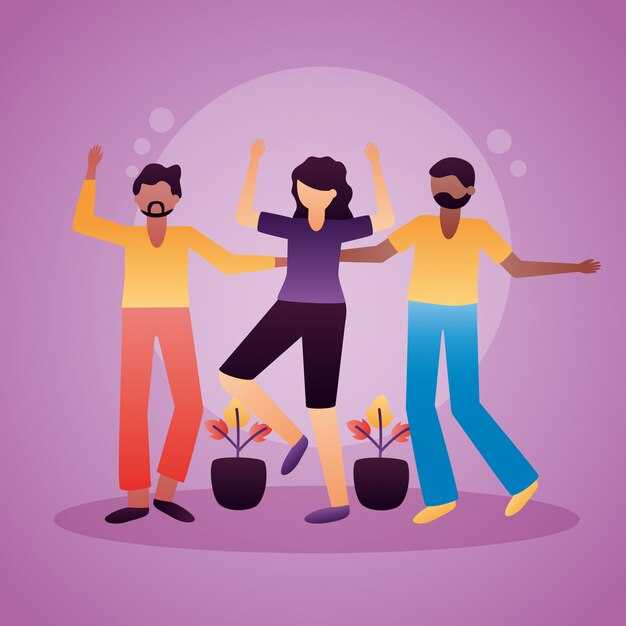People will often reduce women’s ADHD to simple daydreaming, lapses in concentration, or messy habits. But for many women it’s far more than occasional forgetfulness — it’s a stealthy, corrosive pain that eats away at self-esteem. And most conversations, even among professionals, rarely address the deeper damage. What tends to stay out of sight is the shame: the heavy, gnawing shame of being the person who misses appointments, who can’t keep bills in order, who blurts something that damages a friendship, who vows yet again that tomorrow will be different and then wakes to the same pattern. There’s a big overlap between ADHD and complex PTSD, which is the focus here. Some of you may have one diagnosis and not the other — for example, I have complex PTSD but not ADHD — though I study all these conditions closely. What’s striking is how much their symptoms resemble each other. Many clinicians believe complex PTSD — the form that stems from prolonged, severe stress often beginning in childhood — is sometimes mistaken for ADHD. A lot of people here are wondering what fits them best. We don’t diagnose in this space; we name symptoms and explore practical responses. If paying attention and finishing tasks are a struggle for you, you’re in the right place — especially if coping with those symptoms has filled you with shame. That shame is amplified for women because so many are socialized to be the ones who keep everything functioning: the home, the children, calendars, relationships, and the emotional climate. Strong executive functioning is often expected and admired as a “natural” female strength. When ADHD interferes, those expectations collide with a brain that doesn’t consistently cooperate, and the fallout can be brutal. Here’s a hard truth people avoid: ADHD doesn’t only cause hassles — it erodes self-confidence. Each missed responsibility piles up into “proof” that you’re unreliable or lazy, that you don’t measure up. After years of this, you stop trusting your own ability and invent elaborate ways to hide the struggle. If you also grew up with trauma, as many women with ADHD did, distrust becomes a habit; you learn to anticipate criticism and brace for disapproval. You flinch for the sigh, imagine the eye roll, expect the lecture about trying harder, and begin to internalize a sense of being flawed. That internalized belief is what makes ADHD’s harm so hidden and so devastating. In my work with hundreds healing from childhood trauma, I see these patterns repeatedly: ADHD and early trauma share overlapping consequences. Neurological dysregulation is central to both, shaping how the nervous system responds to stress. Childhood trauma tends to impact brain regions tied to emotion regulation, memory, and self-image, while ADHD more directly affects attention, behavioral control, and impulse regulation. Both pathways disrupt cognitive and emotional functioning, producing symptoms like poor concentration, impulsivity, and a sense of mental fog. If you want to recognize when you’re dysregulated, learning the signs is tremendously useful — it lets you notice what’s happening in real time. I offer a free PDF titled “Signs of Dysregulation,” and I’ll link it in the top line of the description below this video so you can download it immediately. Dysregulation makes it harder to focus, follow through, and manage time, and the resulting shame and pressure women face are very real. The first hidden wound of ADHD in women is how it undermines relationships. People often fail to connect the dots: missed birthdays, unanswered calls, lateness, or zoning out mid-conversation are frequently read as selfishness or emotional indifference. For women, the cultural expectation is to be the attentive emotional caretaker, so when ADHD interferes, the reaction is often to label someone as flaky, cold, or unreliable. In truth, you may care deeply but be unable to meet others’ expectations in the way they assume. The path forward isn’t to hide or make excuses; it’s to acknowledge the reality and then build supports that let you show up more consistently. That is how trust is rebuilt. The second hidden wound is the constant inner battle. You might be full of bright ideas, periodic surges of energy, and a powerful desire to create or connect — and then suddenly the internal switch goes off and you’re paralyzed, unable to start what you intended. Outside, it looks like procrastination; inside, it feels like your own brain has betrayed you. The good news is you can learn to work with those shifts rather than be overwhelmed by them. Break big projects into tiny, manageable steps. Don’t wait for the perfect mood; begin imperfectly. Start small and unglamorous; that’s how momentum grows. When you truly can’t get off the couch, even simple movement helps — stand up, walk, go outside, move your body — and then do one tiny task to get the engine running. The third hidden wound is how often women’s ADHD is missed or misdiagnosed because they weren’t disruptive children. Maybe you were the “good girl,” quiet and drifting through class, putting in hidden effort to keep up, or cultivating perfectionism to mask inner chaos. Often, a formal diagnosis arrives only after years of anxiety, depression, and coping strategies that fail. By then shame is deeply rooted. But recognition can come at any point, and you can decide now not to live weighed down by that shame. A small beginning is valuable. The fourth hidden wound is the exhaustion of masking. Many women become experts at disguising symptoms: working twice as long, staying up late to meet demands, maintaining elaborate systems to appear competent while feeling like they’re constantly dropping the ball. Masking exacts a high price: burnout and collapse. Because most people never saw the effort it took to keep things afloat, they don’t understand the sudden breakdown. The remedy isn’t abandoning responsibilities; it’s building sustainable systems — small, consistent routines that actually support you rather than wearing you out trying to match someone else’s standards. The fifth hidden wound is a profound loneliness. When you keep failing at visible tasks, zoning out, and asking for forgiveness repeatedly, friendships fray and romantic relationships strain. Even in a crowd, you may feel isolated with the secret sense that you’re failing at what others find simple. Loneliness doesn’t have to be permanent. You can restore connection by telling the truth in small doses, honoring small promises, and cultivating relationships with people who appreciate your efforts rather than penalize your struggles. Relationships don’t require perfection — they need reliability, care, and honesty, and those are skills you can practice and grow. Now, here are practical steps because you’re not trapped. ADHD won’t be erased by magic, but you can refuse to be driven by shame and shift how you respond. Those shifts matter more than most people imagine. First, separate your identity from the times your brain is off track. Forgetting an appointment doesn’t define your worth; missing a deadline doesn’t nullify your intelligence. It signals a need for external scaffolding so you can deliver. That’s not weakness — it’s responsibility. Second, stop waiting for a rescuer. No one will appear to organize your time for you. That may feel unfair and it might be harder for you than for others, but taking ownership sooner is liberating. Third, keep your tools simple. Overly complex planners, countless apps, or obsessive color-coding can be another form of avoidance. Choose one reliable tool and use it consistently; consistency beats clever systems every time. For example, I use a free app called Conbon Flow — many people in this community use it too. It’s a kanban-style tool where I create columns for each day and add tasks, color-coding them to represent estimated time: a half hour might be yellow, two hours blue, and so on. I arrange tasks by priority, and if I can’t finish something I slide it to the next day. That approach helps me manage a long list of obligations I could never keep in my head. I check my board first thing in the morning and again at night, and I check my calendar so I know the first place I need to be and whether I’ll need hair and makeup, which helps me sleep more peacefully knowing what tomorrow will require. Fourth, be selective about the people you trust with your accountability. If someone only highlights your failures and never notices effort, they’re not the right partner for you. Surround yourself with people who expand your sense of capability rather than shrink it. The people in your inner circle should either amplify your agency or feed your shame — choose agency. Fifth, address dysregulation directly. ADHD symptoms intensify when your nervous system is activated. You can’t eliminate every trigger, but you can cultivate daily practices that help refresh and reset your nervous system. I use simple, free daily practices that are very effective at clearing mental clutter, calming emotions, and restoring focus. I’ll link that free course, “The Daily Practice,” in the second line of the description below this video. When you take that course or any of my offerings, you’re also invited to free Zoom sessions led by me and my team twice a month, where we practice the daily routines together and answer questions. Those calls are my favorite part of the work, and the community and course are free, so you can experience much of the program without spending anything. We also have paid options, but you can access the core tools for no cost. None of this is about “fixing” yourself so you’ll finally be acceptable to others. It’s about gentle daily practice so your priorities become clearer and you make choices that move your life forward. The more you do that, the less space shame has to run the show. The hidden pain of ADHD in women is not the symptoms alone but how shame convinces you that you’re broken. You are not broken. You are a whole person with meaningful gifts. The turning point arrives when you stop measuring yourself against what’s easy for others and begin building systems that suit you and allow your potential to flourish. If you like this video, there’s another one you’ll enjoy right here — see you very soon. I’ll bet you’ve used every excuse in the book to get out of plans; each time you swap integrity for relief and a little piece of yourself slips away, but the momentary ease can feel worth it. [Music]
![People will often reduce women’s ADHD to simple daydreaming, lapses in concentration, or messy habits. But for many women it’s far more than occasional forgetfulness — it’s a stealthy, corrosive pain that eats away at self-esteem. And most conversations, even among professionals, rarely address the deeper damage. What tends to stay out of sight is the shame: the heavy, gnawing shame of being the person who misses appointments, who can’t keep bills in order, who blurts something that damages a friendship, who vows yet again that tomorrow will be different and then wakes to the same pattern. There’s a big overlap between ADHD and complex PTSD, which is the focus here. Some of you may have one diagnosis and not the other — for example, I have complex PTSD but not ADHD — though I study all these conditions closely. What’s striking is how much their symptoms resemble each other. Many clinicians believe complex PTSD — the form that stems from prolonged, severe stress often beginning in childhood — is sometimes mistaken for ADHD. A lot of people here are wondering what fits them best. We don’t diagnose in this space; we name symptoms and explore practical responses. If paying attention and finishing tasks are a struggle for you, you’re in the right place — especially if coping with those symptoms has filled you with shame. That shame is amplified for women because so many are socialized to be the ones who keep everything functioning: the home, the children, calendars, relationships, and the emotional climate. Strong executive functioning is often expected and admired as a “natural” female strength. When ADHD interferes, those expectations collide with a brain that doesn’t consistently cooperate, and the fallout can be brutal. Here’s a hard truth people avoid: ADHD doesn’t only cause hassles — it erodes self-confidence. Each missed responsibility piles up into “proof” that you’re unreliable or lazy, that you don’t measure up. After years of this, you stop trusting your own ability and invent elaborate ways to hide the struggle. If you also grew up with trauma, as many women with ADHD did, distrust becomes a habit; you learn to anticipate criticism and brace for disapproval. You flinch for the sigh, imagine the eye roll, expect the lecture about trying harder, and begin to internalize a sense of being flawed. That internalized belief is what makes ADHD’s harm so hidden and so devastating. In my work with hundreds healing from childhood trauma, I see these patterns repeatedly: ADHD and early trauma share overlapping consequences. Neurological dysregulation is central to both, shaping how the nervous system responds to stress. Childhood trauma tends to impact brain regions tied to emotion regulation, memory, and self-image, while ADHD more directly affects attention, behavioral control, and impulse regulation. Both pathways disrupt cognitive and emotional functioning, producing symptoms like poor concentration, impulsivity, and a sense of mental fog. If you want to recognize when you’re dysregulated, learning the signs is tremendously useful — it lets you notice what’s happening in real time. I offer a free PDF titled “Signs of Dysregulation,” and I’ll link it in the top line of the description below this video so you can download it immediately. Dysregulation makes it harder to focus, follow through, and manage time, and the resulting shame and pressure women face are very real. The first hidden wound of ADHD in women is how it undermines relationships. People often fail to connect the dots: missed birthdays, unanswered calls, lateness, or zoning out mid-conversation are frequently read as selfishness or emotional indifference. For women, the cultural expectation is to be the attentive emotional caretaker, so when ADHD interferes, the reaction is often to label someone as flaky, cold, or unreliable. In truth, you may care deeply but be unable to meet others’ expectations in the way they assume. The path forward isn’t to hide or make excuses; it’s to acknowledge the reality and then build supports that let you show up more consistently. That is how trust is rebuilt. The second hidden wound is the constant inner battle. You might be full of bright ideas, periodic surges of energy, and a powerful desire to create or connect — and then suddenly the internal switch goes off and you’re paralyzed, unable to start what you intended. Outside, it looks like procrastination; inside, it feels like your own brain has betrayed you. The good news is you can learn to work with those shifts rather than be overwhelmed by them. Break big projects into tiny, manageable steps. Don’t wait for the perfect mood; begin imperfectly. Start small and unglamorous; that’s how momentum grows. When you truly can’t get off the couch, even simple movement helps — stand up, walk, go outside, move your body — and then do one tiny task to get the engine running. The third hidden wound is how often women’s ADHD is missed or misdiagnosed because they weren’t disruptive children. Maybe you were the “good girl,” quiet and drifting through class, putting in hidden effort to keep up, or cultivating perfectionism to mask inner chaos. Often, a formal diagnosis arrives only after years of anxiety, depression, and coping strategies that fail. By then shame is deeply rooted. But recognition can come at any point, and you can decide now not to live weighed down by that shame. A small beginning is valuable. The fourth hidden wound is the exhaustion of masking. Many women become experts at disguising symptoms: working twice as long, staying up late to meet demands, maintaining elaborate systems to appear competent while feeling like they’re constantly dropping the ball. Masking exacts a high price: burnout and collapse. Because most people never saw the effort it took to keep things afloat, they don’t understand the sudden breakdown. The remedy isn’t abandoning responsibilities; it’s building sustainable systems — small, consistent routines that actually support you rather than wearing you out trying to match someone else’s standards. The fifth hidden wound is a profound loneliness. When you keep failing at visible tasks, zoning out, and asking for forgiveness repeatedly, friendships fray and romantic relationships strain. Even in a crowd, you may feel isolated with the secret sense that you’re failing at what others find simple. Loneliness doesn’t have to be permanent. You can restore connection by telling the truth in small doses, honoring small promises, and cultivating relationships with people who appreciate your efforts rather than penalize your struggles. Relationships don’t require perfection — they need reliability, care, and honesty, and those are skills you can practice and grow. Now, here are practical steps because you’re not trapped. ADHD won’t be erased by magic, but you can refuse to be driven by shame and shift how you respond. Those shifts matter more than most people imagine. First, separate your identity from the times your brain is off track. Forgetting an appointment doesn’t define your worth; missing a deadline doesn’t nullify your intelligence. It signals a need for external scaffolding so you can deliver. That’s not weakness — it’s responsibility. Second, stop waiting for a rescuer. No one will appear to organize your time for you. That may feel unfair and it might be harder for you than for others, but taking ownership sooner is liberating. Third, keep your tools simple. Overly complex planners, countless apps, or obsessive color-coding can be another form of avoidance. Choose one reliable tool and use it consistently; consistency beats clever systems every time. For example, I use a free app called Conbon Flow — many people in this community use it too. It’s a kanban-style tool where I create columns for each day and add tasks, color-coding them to represent estimated time: a half hour might be yellow, two hours blue, and so on. I arrange tasks by priority, and if I can’t finish something I slide it to the next day. That approach helps me manage a long list of obligations I could never keep in my head. I check my board first thing in the morning and again at night, and I check my calendar so I know the first place I need to be and whether I’ll need hair and makeup, which helps me sleep more peacefully knowing what tomorrow will require. Fourth, be selective about the people you trust with your accountability. If someone only highlights your failures and never notices effort, they’re not the right partner for you. Surround yourself with people who expand your sense of capability rather than shrink it. The people in your inner circle should either amplify your agency or feed your shame — choose agency. Fifth, address dysregulation directly. ADHD symptoms intensify when your nervous system is activated. You can’t eliminate every trigger, but you can cultivate daily practices that help refresh and reset your nervous system. I use simple, free daily practices that are very effective at clearing mental clutter, calming emotions, and restoring focus. I’ll link that free course, “The Daily Practice,” in the second line of the description below this video. When you take that course or any of my offerings, you’re also invited to free Zoom sessions led by me and my team twice a month, where we practice the daily routines together and answer questions. Those calls are my favorite part of the work, and the community and course are free, so you can experience much of the program without spending anything. We also have paid options, but you can access the core tools for no cost. None of this is about “fixing” yourself so you’ll finally be acceptable to others. It’s about gentle daily practice so your priorities become clearer and you make choices that move your life forward. The more you do that, the less space shame has to run the show. The hidden pain of ADHD in women is not the symptoms alone but how shame convinces you that you’re broken. You are not broken. You are a whole person with meaningful gifts. The turning point arrives when you stop measuring yourself against what’s easy for others and begin building systems that suit you and allow your potential to flourish. If you like this video, there’s another one you’ll enjoy right here — see you very soon. I’ll bet you’ve used every excuse in the book to get out of plans; each time you swap integrity for relief and a little piece of yourself slips away, but the momentary ease can feel worth it. [Music]](/wp-content/images/the-hidden-pain-of-adhd-in-women-no-one-talks-about-y1yfy0hq.jpg)


 The Hidden Pain of ADHD in Women No One Talks About">
The Hidden Pain of ADHD in Women No One Talks About">

 Why she’s not IN THE MOOD anymore">
Why she’s not IN THE MOOD anymore">
 Do you REALLY care how your PARTNER feels?">
Do you REALLY care how your PARTNER feels?">
 If Marriage and Kids are What You Want, Here’s What to Do">
If Marriage and Kids are What You Want, Here’s What to Do">
 Great Friendships Grow When You Master These Skills">
Great Friendships Grow When You Master These Skills">
 My Marriage DIED because I couldn’t Communicate!">
My Marriage DIED because I couldn’t Communicate!">
 How to Break Free of ENTANGLEMENT With Exes">
How to Break Free of ENTANGLEMENT With Exes">
 Still Missing Them? These 5 Healing Steps Will Set You Free from the Avoidant’s Spell | Mel Robbins">
Still Missing Them? These 5 Healing Steps Will Set You Free from the Avoidant’s Spell | Mel Robbins">
 Do their feelings matter to you?">
Do their feelings matter to you?">
 THIS Simple Question Completely Changed My Marriage.">
THIS Simple Question Completely Changed My Marriage.">
 Am I Allowed to LOOK at other Women?">
Am I Allowed to LOOK at other Women?">